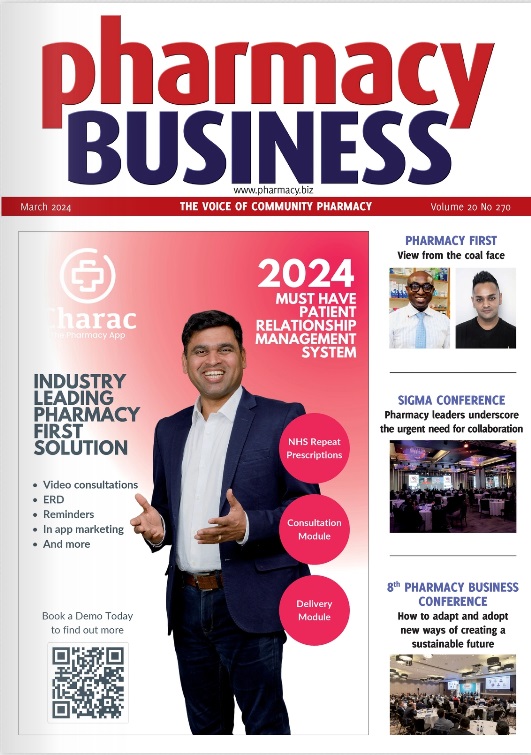Gianpiero Celino outlines a vision for the future of digital healthcare building on the huge progress made by the NHS during the Coronavirus pandemic…
Collectively, the NHS must embrace the lessons learned from the Covid-19 pandemic, which saw mass adoption of digital tools and solutions to provide continuity of care in extraordinary circumstances. Despite the mass rollout of the vaccine, we still have to continue to maximise these tools to manage the backlog of care that has accrued.
There is now a recognition that healthcare, and particularly primary care can be delivered in a more modern, efficient and responsive way – and this relies in part on the ability for data to flow beyond traditional boundaries.
It also relies on the ability to connect different elements of primary and community care –community pharmacy; GP practices; and Out of Hospital care – to facilitate better shared and proactive/preventative care.
Collaboration
The NHS response to the pandemic accelerated so much more than the use of new digital technologies. Yes, PMR enhancements such as one click access to the Summary Care Record and Real-Time Exemption Checking, remote access, and prescription delivery tracking applications were fast-tracked.
This met with both immediate needs to provide continuity of patient care and essential time savings and will provide a foundation for the evolution of the way patients and pharmacists interact and the services that can be provided. However, even more importantly for the future of community and primary care services, the response revealed what can be achieved with the right attitude, commitment and collaborative approach.
Barriers were overcome, bureaucracy thrown aside and the delays that typically dog NHS IT development disappeared. NHSX’s immediate issuing of guidance on privacy and data protection, for example, was a vital intervention that saved huge amounts of time and advanced the deployment of new technologies.
Of course, no one is suggesting the solutions deployed in response to the crisis are perfect. They have, however, provided a tantalizing view of what digital technologies can and must enable within primary and community care – and now is the chance to ‘build back better’ throughout the NHS.
Digital future
So what must change and what can be achieved? Given the pace of technological evolution over the past decade, it is a shame that the digital technologies still largely lag behind the way pharmacists want to deliver patient services.
An extraordinary level of collaboration had already been achieved across an entire network of health care providers well before the pandemic hit – and the way the NHS had to respond to the virus highlighted the value of that cooperative model. From GPs, nurse practitioners and pharmacists that play a key role within practices, to the hospital consultants, care homes, opticians and dentists, the concept of working together as a team to look after patients is now firmly established.
Technology must adapt to support that clinical imperative. Some progress had been made pre-COVID. At a GP practice level, collaboration is well supported by GP clinical systems that share patient information across teams within a practice. However, as yet, there is no good, wide scale adoption of systems that allow true shared care to happen across multiple GP practices, local authorities and community care services. This is the urgent issue that needs to be addressed as a priority for 2021.
Health economy
The need for, and challenges associated with, data sharing across a wider health economy have been highlighted by the Covid-19 mass vaccination programme which demands multi-disciplinary co-operation across a wide health economy. Safely vaccinating as many as one thousand patients at a time bears no relation to the ten or so flu vaccinations undertaken daily within a GP practice and will require the collaboration of many different service providers.
This emphasises what is required to achieve truly effective team working across the wider health economy. The technology needs to support individuals working in different locations, while still using familiar systems and working methods to minimise disruption.
It needs to ensure individual health care providers have instant access to useful additional patient information wherever they are from GP surgery to dedicated clinics, community pharmacy and patient home. And, critically, the concept of the GP record as the single version of patient truth must remain at the heart of this collaborative model.
This approach works for both clinicians and patients. It supports the essential and growing role that community care providers play and provides a seamless link between primary and secondary care.
Proactive care
The big patient win is that this collaborative approach creates a team of healthcare providers acting as one, coordinating and sharing and collaborating to deliver the right care at the right time. And it changes the model away from one based on intermittent, appointment or prescription led patient interaction to one where the multi-disciplinary team can undertake a programme of continuous patient review.
The management of Type 2 diabetes is a prime example of a complex condition that requires a multi-disciplinary team involving doctors, consultants, pharmacists, diabetes nurses and health educators. These patients require regular review – but there are also significant advantages associated with continuous support that does not require a specific appointment.
On top of the standard annual review, effective data sharing between both health care providers and the patient enables the entire team to collaborate throughout the year. Frequent updates about how the patient’s diabetes is being controlled means team members– across the local health economy– can embrace proactive care by suggesting changes to diet, lifestyle or medication at any time.
Local Technology gaps
This multi-disciplinary way of delivering patient care is the current and future direction of travel for primary and community care. The priority for 2021 is to address the technology gaps revealed by the Covid-19 NHS response and to use that knowledge to achieve a wider adoption of a broad, effective community care model. In addition, that means focusing very specifically on what must be delivered – and ensuring the barriers that have been broken down are not recreated.
Healthcare professionals’ expectations were raised during the pandemic. Community pharmacists want IT suppliers and systems that will change and flex to support service delivery throughout a wider health economy.
They are expecting innovation and rapid delivery of new solutions that work immediately in these new settings. They want not just PMR systems, but digital technologies that allow them to become more efficient, provide additional value-added services, and deliver collaboration at scale to look after patients throughout the wider health economy.
And that can only be achieved with the commitment of all the stakeholders within each local health economy.
Gianpiero Celino is clinical director at Cegedim Healthcare Solutions.









